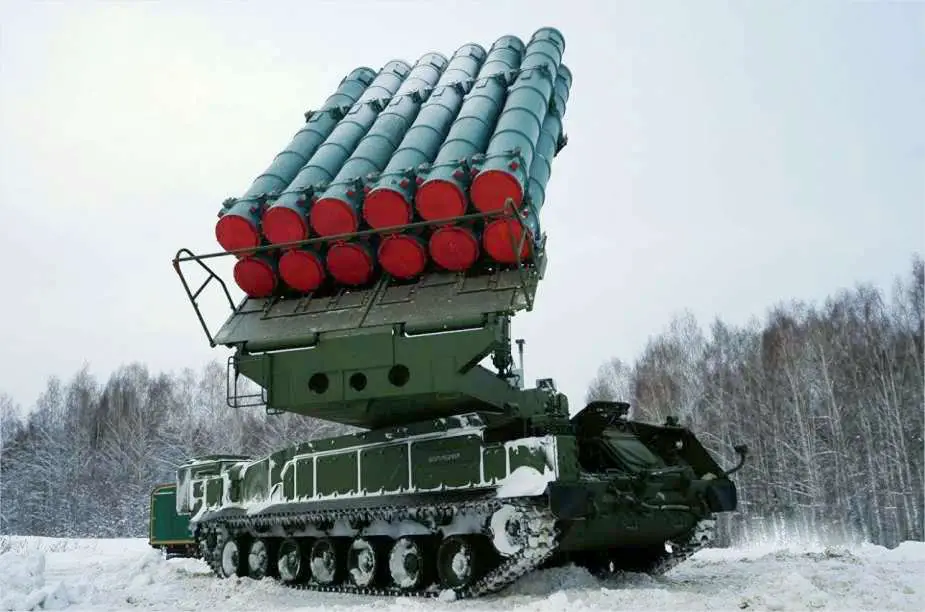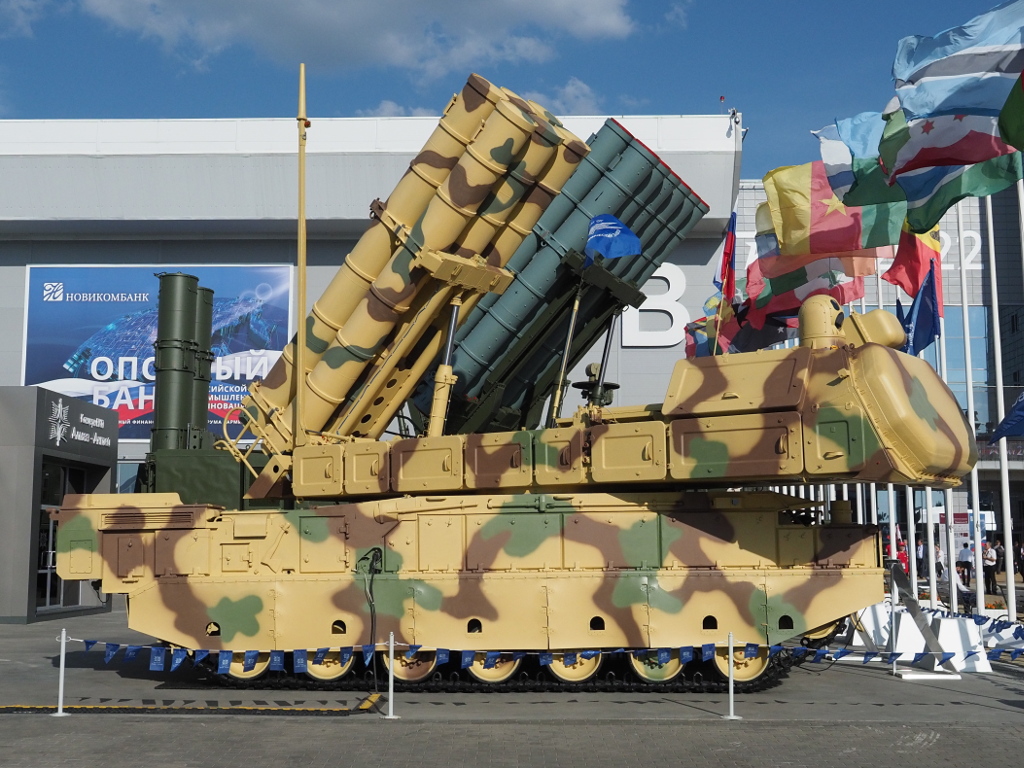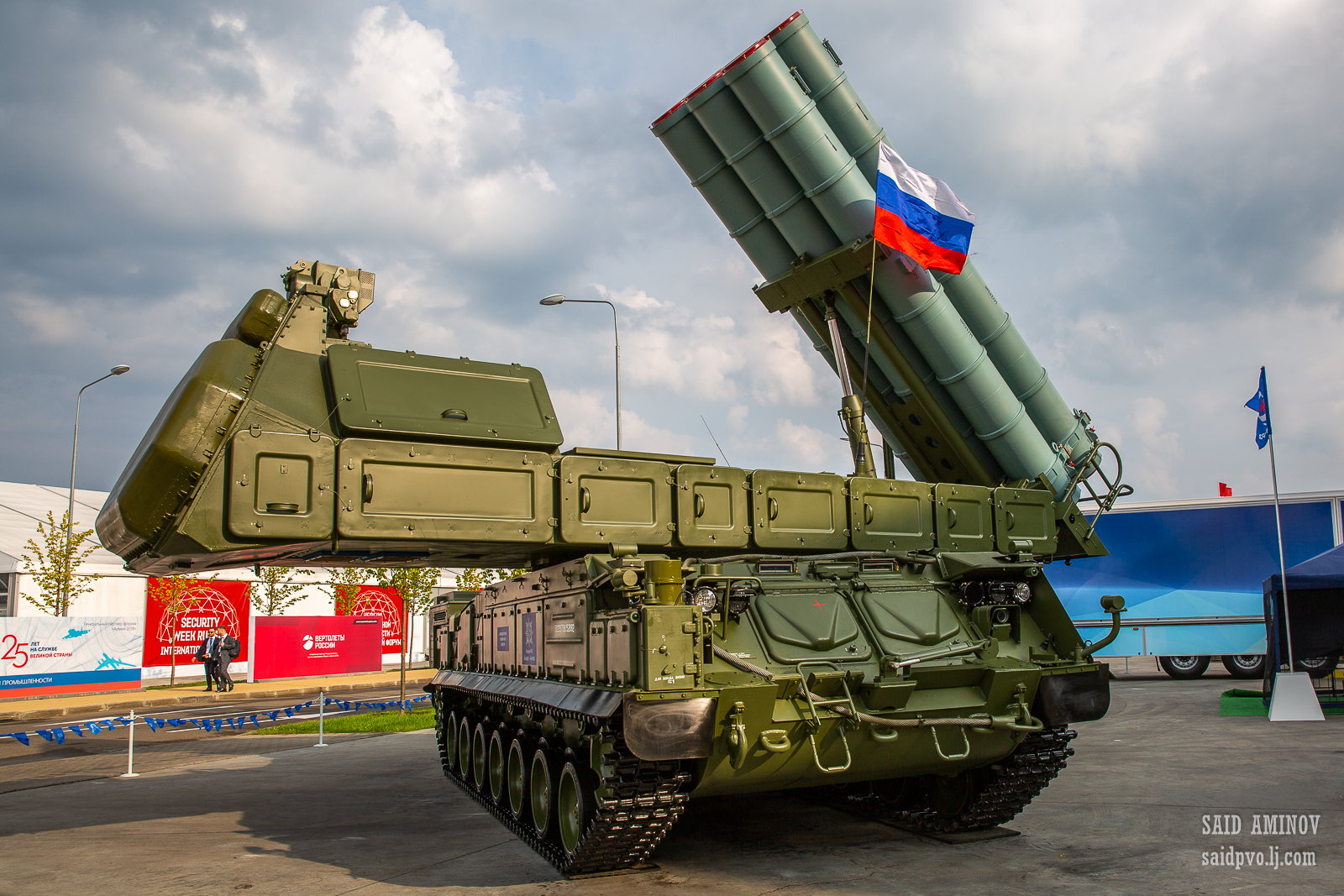Moscow’s Missile Shield: BUK-M3 Viking Claimed Able to Neutralize F-35s, Cruise Missiles, and Hypersonic Threats
This latest iteration of the venerable BUK air defence family has been engineered as a multi-role, medium-range surface-to-air missile (SAM) system, offering robust protection against an array of airborne platforms ranging from cruise missiles and tactical ballistic missiles to smart bombs, helicopters, and low-flying unmanned aerial vehicles (UAVs).
(DEFENCE SECURITY ASIA) – In a bold and strategic declaration aimed at showcasing its next-generation air defence capabilities, Russia’s state arms export agency, Rosoboronexport, has asserted that its BUK-M3 “Viking” system—codenamed SA-27 Gullum by NATO—is capable of neutralizing some of the most advanced aerial threats in the modern battlespace, including fifth-generation stealth aircraft such as the American F-35 Lightning II and F-22 Raptor.
This latest iteration of the venerable BUK air defence family has been engineered as a multi-role, medium-range surface-to-air missile (SAM) system, offering robust protection against an array of airborne platforms ranging from cruise missiles and tactical ballistic missiles to smart bombs, helicopters, and low-flying unmanned aerial vehicles (UAVs).
With a maximum engagement range of 65 kilometres and a vertical kill envelope reaching up to 25 kilometres in altitude, the Viking provides layered and mobile air defence coverage for both static installations and manoeuvrable battlefield units operating in high-threat environments.
Of critical importance to its battlefield role is the system’s ability to intercept short-range tactical ballistic missiles at distances of up to 50 kilometres, offering a vital shield for forward-deployed formations and key strategic infrastructure under the threat of high-velocity strikes.
Its capability to engage targets flying as low as 10 metres—such as terrain-hugging cruise missiles or drones—demonstrates its agility in countering low-observable, high-speed threats while retaining the altitude ceiling necessary to intercept high-flying surveillance platforms and strategic bombers.
Developed by the Russian aerospace and defence conglomerate Almaz-Antey, the BUK-M3 Viking represents the most sophisticated evolution of the BUK lineage, integrating significant advancements in radar technology, command-and-control architecture, and missile lethality.

The export-designated “Viking” variant leverages combat-proven systems fielded by Russian forces since 2016 but introduces upgraded electronics, enhanced target acquisition modules, and a new class of missiles specifically hardened against jamming and electronic countermeasures—a reflection of the growing importance of electromagnetic spectrum dominance in modern warfare.
At the core of the system lies the 9A317M transporter-erector-launcher-and-radar (TELAR), which carries six ready-to-fire 9M317M missiles that employ Active Radar Homing guidance for precise mid-course corrections and terminal accuracy, even in heavily contested environments.
These missiles are supported by advanced fire-control algorithms and thermal imaging target acquisition systems, providing the Viking with the ability to track, lock onto, and destroy multiple high-speed threats in low-visibility, cluttered, or electronically disrupted battlespaces.
According to Rosoboronexport, the BUK-M3 Viking can simultaneously detect, track, and engage up to 36 airborne targets across diverse vectors, including those operating over land or sea—an operational capability that underscores its status as a true multi-domain defence asset.
Engineered for seamless integration with broader layered air defence networks, the Viking is fully interoperable with other Almaz-Antey systems such as the long-range Antey-2500, allowing operators to build a composite and scalable anti-access/area denial (A2/AD) shield tailored to national defence needs.

India, which has a long-standing military-technical relationship with Russia, brings valuable operational familiarity to the BUK ecosystem, having deployed the navalised Shtil-1 variant aboard its frontline warships as part of its layered maritime air defence.
The BUK-M3 Viking’s blend of extended range, altitude flexibility, multi-target engagement, and battlefield mobility positions it as one of the most adaptive and formidable mid-tier air defence systems currently available on the global arms market.
Its ability to engage both high-speed, low-altitude targets such as sea-skimming missiles or UAVs and high-altitude, slow-moving threats like reconnaissance aircraft makes it a critical asset for nations seeking full-spectrum defensive coverage in increasingly contested air environments.
Since its formal induction into the Russian Armed Forces in 2016, the BUK-M3 has demonstrated consistent operational reliability, and its modular architecture continues to attract interest from international clients seeking scalable and technologically mature air defence solutions.
As modern conflicts increasingly shift toward saturation attacks involving a mix of manned and unmanned threats, the BUK-M3 Viking’s capability to deliver rapid, simultaneous, and precise interception underpins its strategic relevance in the evolving theatre of multi-domain warfare.

BUK-M3 “Viking” – Technical Specifications
Designation:
BUK-M3 “Viking” (Export Variant)
NATO Reporting Name: SA-27 “Gullum”
Developer:
Almaz-Antey Air and Space Defence Corporation (Russia)
System Type:
Medium-range, mobile, surface-to-air missile (SAM) system
Multi-target, all-weather capability
Missile: 9M317M
-
Missile Type: Active Radar Homing Surface-to-Air Missile
-
Length: Approx. 5.2 meters
-
Diameter: 0.36 meters
-
Weight: ~710 kg
-
Warhead: High-explosive fragmentation (HE-FRAG), proximity-fused
-
Guidance System: Active radar homing with inertial mid-course correction
-
Engagement Range (Aerodynamic Targets): Up to 65 km
-
Engagement Range (Tactical Ballistic Missiles): Up to 50 km
-
Engagement Altitude: 10 m to 25 km
-
Speed: Mach 4+
Launcher Vehicle: 9A317M TELAR
-
Missile Loadout: 6 ready-to-launch 9M317M missiles
-
Radar System: Phased-array radar integrated on TELAR
-
Target Engagement: Up to 36 targets simultaneously (system-level)
-
Target Tracking Range: Up to 160 km
-
Reaction Time: 10 seconds (from target detection to missile launch)
Key Capabilities
-
Engagement of fifth-generation stealth aircraft (e.g., F-35, F-22)
-
Interception of cruise missiles, smart bombs, UAVs, rotary-wing and fixed-wing aircraft
-
Anti-tactical ballistic missile capability
-
Resistant to jamming and electronic countermeasures
-
All-weather, day-night operational capability
-
High mobility and rapid redeployment
System Composition (Typical Battery)
-
TELAR Units (9A317M): Up to 6 per battery
-
Transporter-Loader Vehicles (TLVs): Supporting rapid reload
-
Command Post Vehicle: Coordinates engagement data and target prioritization
-
Target Acquisition Radar (TAR): Sector or panoramic surveillance
Integration & Interoperability
-
Compatible with and complementary to the S-300/400 and Antey-2500 systems
-
Can be networked within layered Integrated Air Defence Systems (IADS)
-
Deployable for both national air defence and battlefield protection roles
— DEFENCE SECURITY ASIA


